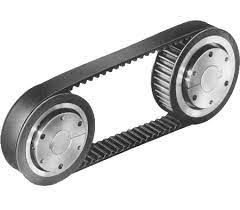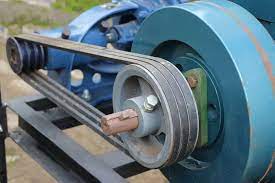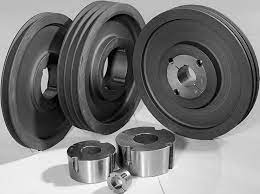Product Description
We supply Clutch release bearing, auto cluch bearing, release bearing, to many customers and get good feedback from customers following are the types which we can produce and supply:
50SCRN31P-1, 48RTC3301, 48RTC3303, 44TKB2805, FCR55-17-9
FCR55-17-11, FCR54/32, FCR50/10, 47TKB3101, 47TKB3102
CBU553524B, F2182862, FBX130B, RCTS31SA, 48TKA3201, PLC04-23, 58TKA3703, 48TKA3214, RCT338SA, RCT38SL1, 35TRK-1,
40TRK39-4SB, 40TRBC07-27B, 40TRK30W2SB, 48TKA3214, 28TAG12
RCT338SA1, RCT45-1S, RCT4075-1S, RCT3360A, TK55-1A1U3, CT70B
TK45-4U3, CT52A-1, 65TNK20, 60TNK20, 45TNK20, RCT45-4S, 053TRBC09-7, 41211, 44011614, 892862M2
986714K1, 986809K2, 986813, 996708K, 996908, CT1310, FCR54-1
BC12S11, 615469A, C28-423, TKS4850K, RCT55B
RCT45-1S, RCT3558ARUS, TK33-1U3, TK55-1BU3
54TKA3501, 50TKA3805, BCA614018, CT24AG
50TKB3504, 50SCRN31P
FCR55-17-11-2, 50SCRN34-10P, 50SCRN31P-4B, 60TKB3506R
RCT337SA3-2, TK55-1A-1, 50SCRN40P4, 68TKB3506
48TKA3214, 48TKA3201, 48TKA3301, 58TKA3703, FCR60-32-14, 62TMK20, FCR47-8-4-2E, FCR62-29-11-2E
TK55-1B, FCR54-46-2-2E, 62TKA3309, 48THA3302A, PU335737ARR14
TK40-4A-40TRK-1, 65TNK20, 50SCRN44P-2AQ, CBU472921C, FCR-15-2A 68TKB3303RA, 60SCRN31-P-6, 47SCRN031-2, 62TKA3311, CBU33731 CBU442822 RCTS338SA1 RCTS338SA2 RCT371SA RCT322SA RCTS28SA RCT356SA9 50SCRN31-P1 RCT401SA RCT37SA1 RCT363SA RCT422SA1 RCTS33SA-1 XLB1016 RCT356SA6 RCTS325SA RCT331SA XLB1571 CBU472921 RCTS31SA RCT432SA RCT40SA RCTS354SA RCT283SA RCTS351SA4 RCT473SA RCT356SA8 RCTS33SA-3 RCT337SA-3 RCT4700SA RCTS338SA-4 RCT40 RCTS4067A2RR RCT38SL1 CT70BL1 CT1310 RCT4075-1S RCT4064S RCT3360A2RRS RCT35-1 RCT3558ARUS RCTS45S RCT52S CT52A-1 65TNK20-1 CT5582UR CT45-1S T-74501 T-16000 T-700 T-W8080 T-25201 T-12120 T-85002
SK:
VKC2051, VKC2064, VKC2080, VKC2091, VKC2108, VKC2111, VKC2144, VKC2115, VKC2169, VKC2181, VKC2185, VKC2189, VKC2191, VKC2168, VKC2193, VKC2195, VKC2205, VKC2215, VKC2216, VKC2238, VKC2240, VKC2241, VKC2243, VKC2248, VKC2260, VKC2516, VKC2520, VKC2523, VKC2535, VKC2536, VKC2548, VKC2601, VKC3500, VKC3502, VKC3504, VKC3505, VKC3506, VKC3507, VKC3508, VKC3509, VKC3511, VKC3513, VKC3514, VKC3515, VKC3516, VKC3519, VKC3525, VKC3695, VKC3520, VKC3521, VKC3523, VKC3524, VKC3526, VKC3527, vkc3537, VKC3538, VKC3540, VKC3541, VKC3543, VKC3545, VKC3546, VKC3548, VKC3551, VKC3553, VKC3554, VKC3555, VKC3556, VKC3558, VKC3559, VKC3560, VKC3562, VKC3564, VKC3565, VKC3567, VKC3568, VKC3569, VKC3574, VKC3575, VKC3577, VKC3578, VKC3579, VKC3581, VKC3584, VKC3588, VKC3592, VKC3598, VKC3600, VKC3602, VKC3606, VKC3607, VKC3609, VKC3610, VKC3611, VKC3612, VKC3613, VKC3615, VKC3616, VKC3617, VKC3619, VKC3620, VKC3621, VKC3622, VKC3623, VKC3625, VKC3626, VKC3628, VKC3631, VKC3643, VKC3645, VKC3647, VCK3649, VKC3650, VKC3661, VKC3675, VKC3616, VKC3666, VKC3668, VKC3672, VKC3674, VKC5045, VKC5052, VKC5071, VKC5206, VKC5212, VKC5215, VKC3654, VKC3659, VKD22414, VKD23360, VKD19939, VKD17238, VKD17245, VKC5006, VKC3699,
NSK:
TK70-1AU3, TK55-1BU3, TK55-1AU3, TK52Z-1C, TK52Z-1B, TK45-4U3, TK45-4BU3, TK40-4AU3, TK40-1B2AK2, TK40-16AU3, TK40-14AU3, CB-1439-C, 68TKB3803RA, 68TKB3506AR, 65TNK20, 62TKA3309U3, 62TKA3303U3, 62TKA3211, 60TMK20U3, 60TKC4202, 60TKB3506R, 60TKB3502R, 60TKA3502U3, 58TKZ371, 58TKA3703B, 55TKA3201, 55TKA3102, 54TKE3602A, 54TKE3601, 54TKB3604, 54TKA3501, 50TKE3304, 50TKE3301, 50TKB3505BR, 24TK308E1U3, 35TMK29C1, 50TKB3504BR, 50TKB3501BR, 50TKA3805, 33TKD03U3, 50TKA3305R, 48TKB3204R, 48TKB3202, 48TKA3301, 48TKA3214, 48TKA3211B, 48TKA3210, 48TKA3201, 35TMK29B2, 47TKB3102B, 47TKB3101, 47TKB3001A, 47TKB2901UN3S, 45TKD07U3, 44TKB2805, 44TKB2803, 40TMK29B1U3,
40TMK20B, 40TKD07U3, 40TMK20-1S, 40TMK29, 52TMK804/2E, 62TMK20-1, 65TNK20, 93TKC6301, CBU442822, CBU472921C, CBU543625E, CBUF483326, CT1310, CT38-1L1, CT45-1S, CT50SA, CT50SA, CT5588ARSE, CT55BL1, CT60BR 5A20, CT70B, 81TKL4801, 68TKZ4401, 44TKB2803.
| BOUNDARY DIMENSIONS | KOYO | NSK | NTN | NACHI | DMB | OEM NO. |
| 62.5×33×31 | 50SCRN31P-1 | 50SCRN31P-1 | 31230-12170 | |||
| 67×33.6×27.5 | 48RTC3301 | |||||
| 64×33.3×23 | 48RTC3303 | |||||
| 57×28.2×33 | RCT282SA | 44TKB2805 | 44TKB2805 | |||
| 70×31.7×38 | FCR55-17-9 | FCR55-17-9 | ||||
| 70×31.7×34.5 | FCR55-17-11 | FCR55-17-11 | ||||
| 70×36.1×38.5 | FCR54-48-3/2E | FCR54/32 | FCR54/32 | |||
| 65×33.2×40 | RCT331SA | FCR50-10/2E | FCR50/10 | |||
| 65×31.2×48.5 | 47TKB3101 | 47TKB3101 | 22810-P20-005 | |||
| 65×31.2×48.5 | 47TKB3102 | 47TKB3102 | ||||
| 65.2×31.2×39.5 | CBU553524B | CBU553524B | ||||
| 62×29.2×34.5 | F2182862 | |||||
| 56×24.6×30 | FBX130B | |||||
| 65×31.1×34.5 | RCTS31SA | 55TKA3102 | X10-FCR55-5/2E | RCTS31SA | 22810-PL8-921 | |
| 70×31.8×33.2 | RCT322SA | 48TKA3201 | FCR45-11/2E | 48SCRN32K | 48TKA3201 | MD706180 |
| 60×25.8×23 | PLC04-23 | |||||
| 74×37.1×41.5 | RCT47SA1 | 58TKA3703 | 58TKA3703 | ME657110 | ||
| 66.5×37×20.7 | 48TKA3214 | 48TKA3214 | 8-94101-243-0 | |||
| RCT338SA | 23265-70C00 |
EMAIL ME NOW FOR MORE PHOTOS AND INTRODUCTION ! /* January 22, 2571 19:08:37 */!function(){function s(e,r){var a,o={};try{e&&e.split(“,”).forEach(function(e,t){e&&(a=e.match(/(.*?):(.*)$/))&&1
| Warranty: | 1 Year |
|---|---|
| Type: | Auto Clutch Bearing |
| Material: | Chrome Steel |
| Tolerance: | P6 |
| Certification: | ISO9001, ISO9006, QS9000, SGS |
| Clearance: | C2 |
| Samples: |
US$ 6/Piece
1 Piece(Min.Order) | |
|---|
| Customization: |
Available
| Customized Request |
|---|

Can drive pulleys withstand extreme environmental conditions?
Drive pulleys are mechanical components used in various systems to transmit power and motion. They are commonly found in industries such as manufacturing, mining, and agriculture. The ability of drive pulleys to withstand extreme environmental conditions depends on several factors, including the materials used, the design and construction of the pulley, and the specific conditions it is exposed to.
In general, drive pulleys are designed to be durable and capable of operating under a wide range of environmental conditions. They are typically made from materials such as steel, cast iron, or aluminum, which offer good strength and resistance to wear and corrosion. These materials can withstand moderate to high temperatures, as well as exposure to moisture, dust, and other contaminants.
However, there are limits to the environmental conditions that drive pulleys can withstand. Extreme temperatures, such as those found in extremely hot or cold environments, can affect the performance and lifespan of the pulleys. High temperatures can cause thermal expansion, which may lead to misalignment or excessive wear. Cold temperatures can make materials more brittle and prone to cracking or breaking under stress.
In addition to temperature, other environmental factors such as humidity, corrosive substances, and abrasive particles can also impact the performance of drive pulleys. High humidity levels can promote corrosion, especially if the pulleys are not properly protected or coated with suitable protective finishes. Corrosion can weaken the pulley’s structural integrity and lead to premature failure.
Abrasive particles, such as dust or grit, can cause wear and tear on the pulley’s surface and the belt that runs on it. This can result in reduced traction and slipping, affecting the efficiency and reliability of the system. Proper maintenance and regular cleaning can help mitigate the effects of abrasive particles.
It’s worth noting that some applications may require special types of drive pulleys specifically designed to withstand extreme environmental conditions. For example, in industries where pulleys are exposed to chemicals or highly corrosive substances, pulleys made from stainless steel or other corrosion-resistant materials may be used.
In conclusion, while drive pulleys are designed to be robust and capable of withstanding a wide range of environmental conditions, there are limits to what they can endure. Extreme temperatures, humidity, corrosive substances, and abrasive particles can all impact the performance and lifespan of drive pulleys. It’s important to consider the specific environmental conditions and select pulleys that are suitable for the intended application.

How are drive pulleys utilized in agricultural machinery and equipment?
Drive pulleys play a crucial role in various agricultural machinery and equipment, enabling the transfer of power and motion between different components. Here are some common applications of drive pulleys in agriculture:
1. Belt-driven Systems:
Many agricultural machines use belt-driven systems, where drive pulleys are utilized to transmit power from the engine to different components. For example, in combines and harvesters, drive pulleys connect the engine to the threshing mechanism, cleaning system, and grain handling equipment. These pulleys help drive the belts that transfer power and enable the operation of different functions within the machine.
2. Conveyor Systems:
In agricultural operations such as grain handling facilities, drive pulleys are used in conveyor systems. These pulleys provide the driving force to move materials such as grains, seeds, or feed along the conveyor belts. The drive pulley’s rotation creates the necessary tension and friction to propel the belt, allowing for efficient and controlled material handling and transportation.
3. Augers and Grain Handling Equipment:
Drive pulleys are integral components of augers and other grain handling equipment. Augers are commonly used in agriculture for tasks like loading and unloading grain, transferring feed, or moving bulk materials. Drive pulleys are used to power the rotational motion of the auger, enabling efficient and precise material handling. The pulley’s size and speed determine the auger’s capacity and performance.
4. Irrigation Systems:
Irrigation systems in agriculture often utilize drive pulleys to transmit power from a motor or engine to pumps or water distribution mechanisms. The pulleys drive belts that connect the power source to the irrigation pump, allowing for the pressurized delivery of water to crops. Drive pulleys help regulate the speed and torque required for efficient irrigation operations.
5. Mowers and Hay Balers:
Drive pulleys are employed in mowers and hay balers used for cutting and baling crops such as grass, hay, or straw. These pulleys transfer power from the tractor’s engine to the cutting blades or baling mechanisms, enabling the efficient operation of these machines. The pulleys ensure that the rotational energy from the engine is effectively converted into the desired cutting or baling action.
6. Seeders and Planters:
Seeders and planters in agriculture often rely on drive pulleys to power the distribution mechanisms that sow seeds or plant seedlings. The pulleys drive belts or chains that rotate the seed metering units or planting mechanisms, ensuring precise seed or plant placement in the field. This allows for accurate spacing and depth control during the planting process.
7. Sprayers and Fertilizer Spreaders:
Drive pulleys are utilized in sprayers and fertilizer spreaders to power the spraying or spreading mechanisms. These pulleys transfer power from the engine to the spraying pump or spreader discs, enabling the even distribution of liquid fertilizers, pesticides, or granular materials. The pulleys help maintain the desired rotation speed and torque for effective application.
In summary, drive pulleys are extensively used in various agricultural machinery and equipment for power transmission and motion control. They are employed in belt-driven systems, conveyor systems, augers, irrigation systems, mowers, balers, seeders, planters, sprayers, and fertilizer spreaders. By facilitating the transfer of power, drive pulleys contribute to the efficient operation of agricultural processes, enhancing productivity and performance.

What are the advantages of using drive pulleys for power transmission?
Using drive pulleys for power transmission offers several advantages in mechanical systems. Drive pulleys play a critical role in efficient power transfer and contribute to the overall performance and reliability of the system. Here are some of the advantages of using drive pulleys for power transmission:
1. Efficient Power Transfer:
Drive pulleys provide an efficient means of transferring power from a driving source to driven components. They ensure a solid mechanical connection, allowing for smooth and reliable power transmission with minimal energy losses. By optimizing power transfer, drive pulleys help maximize the efficiency of the system, leading to improved performance and reduced energy consumption.
2. Speed and Torque Conversion:
Drive pulleys, when used in conjunction with belts or chains, enable speed and torque conversion between the driving source and the driven components. By varying the size ratio between the pulleys, different speed and torque relationships can be achieved. This flexibility allows for the adaptation of power output to meet the specific requirements of the driven components, optimizing efficiency and performance.
3. Mechanical Advantage:
Drive pulleys can provide mechanical advantage in power transmission systems. By utilizing different-sized pulleys or multiple pulley arrangements, the mechanical advantage can be increased. This allows the driving source to exert a greater force or torque on the driven components, enabling the system to handle higher loads or resistance. The mechanical advantage provided by drive pulleys enhances the efficiency and capability of the system.
4. Versatility and Adaptability:
Drive pulleys offer versatility and adaptability in power transmission applications. They can be used with various types of belts, cables, or chains, allowing for flexibility in system design. Drive pulleys can accommodate different power requirements, speeds, and load capacities. This versatility makes them suitable for a wide range of industries and applications, from automotive and manufacturing to mining and agriculture.
5. Precise Motion Control:
Drive pulleys, especially when combined with timing belts or chains, provide precise motion control in mechanical systems. The toothed design of timing belts and pulleys ensures accurate positioning and synchronization of components. This is crucial in applications that require precise movement, such as robotics, CNC machines, and conveyor systems. Drive pulleys contribute to the overall accuracy and repeatability of motion control systems.
6. Reduced Slippage and Vibration:
Drive pulleys, particularly those designed with V-grooves or toothed profiles, offer improved grip and reduced slippage between the pulley and the belt or chain. This minimizes energy losses due to slipping and enhances power transmission efficiency. Additionally, the stable engagement between the pulley and the belt or chain reduces vibration, ensuring smoother operation and reduced wear on system components.
7. Easy Maintenance and Serviceability:
Drive pulleys are typically designed for easy maintenance and serviceability. Belts or chains can be easily installed, adjusted, or replaced, allowing for efficient maintenance tasks. Drive pulleys often feature accessible mounting points and adjustment mechanisms, simplifying belt tensioning or alignment procedures. This ease of maintenance reduces downtime, enhances system reliability, and ensures optimal efficiency over the lifespan of the equipment.
In summary, using drive pulleys for power transmission offers advantages such as efficient power transfer, speed and torque conversion, mechanical advantage, versatility, precise motion control, reduced slippage and vibration, and easy maintenance and serviceability. These advantages contribute to the overall performance, reliability, and efficiency of mechanical systems.


editor by CX
2024-05-09












